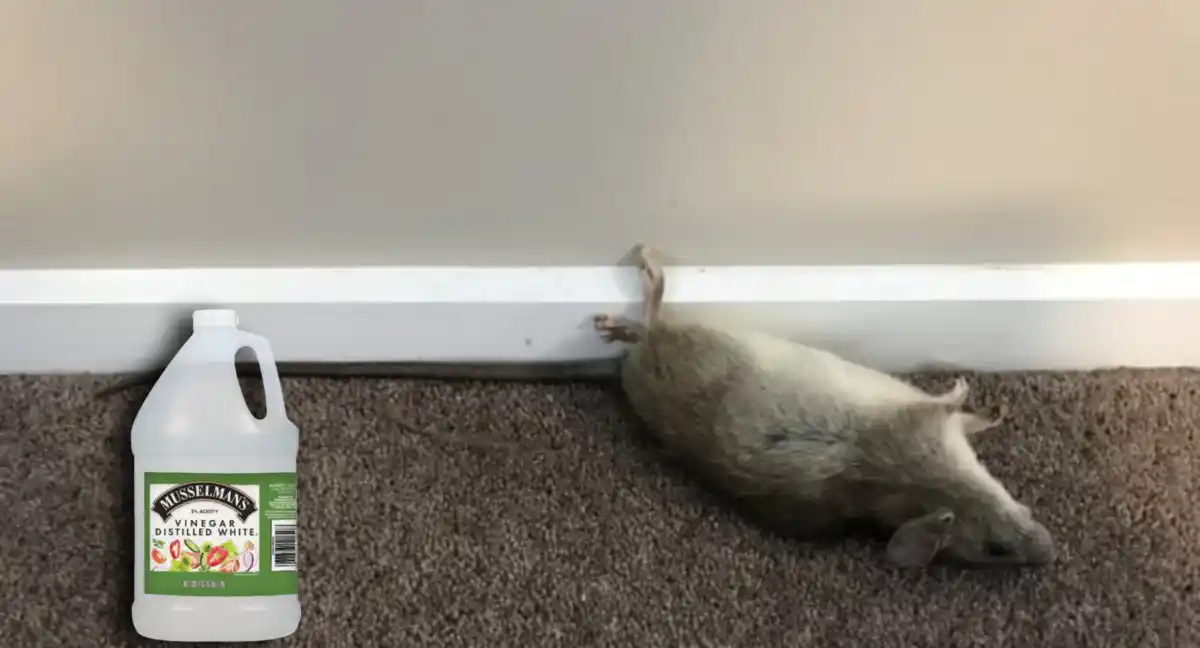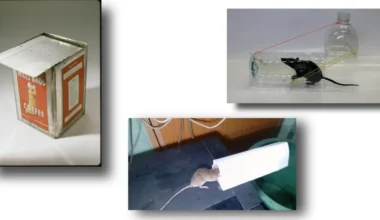Using poisons for mice control can be risky for pets, children, and non-target wildlife while traps may appear cruel. Thus homeowners are shifting to more natural alternatives. Among these options is vinegar. You can get rid of mice with vinegar but it’s not a permanent mice control method. Moreover, it is best to combine vinegar and other rodent control methods to effectively keep them at bay.
Can vinegar repel mice?
Yes, it can. Vinegar is a combination of acetic acid and water made by a two-step fermentation process.¹
Acetic acid is even used in manufacturing acetic anhydride, cellulose acetate, vinyl acetate monomer, acetic esters, chloroacetic acid, plastics, dyes, insecticides, photographic chemicals, and rubber, according to the Virginia Department of Health.²
It is the pungent smell of vinegar that repels mice as they can’t stand the sharp scent of vinegar. You can use apple cider vinegar or white vinegar to remove mice.
How to get rid of mice with vinegar

1. Soak cotton balls with vinegar
Soaking cotton balls in vinegar and strategically placing them is an effective way to use vinegar as a mouse repellent. Soak a handful of cotton balls in white vinegar or apple cider vinegar and place them in areas where with signs of mice such as droppings, smear marks, or signs of their activity.
Cotton balls are particularly useful as you can deploy them in places with mice urine to absorb and sterilize the smell. But note that vinegar can’t disinfect mice droppings effectively.
2. Leave cups of vinegar in the open
In the absence of cotton balls, you can use a cup or cups filled with vinegar to get rid of mice presence. Place the cup in areas with signs of mouse activity. But if you’re unsure about the specific locations but suspect an infestation, tuck the vinegar cup behind furniture or appliances. Multiple cups will be more helpful in a wider coverage to get rid of mice with vinegar if traps don’t work. Make sure to replace the vinegar in the cups every week in well-ventilated spaces.
3. Homemade vinegar spray
Alternatively, consider getting rid of mice with homemade vinegar spray. Prepare a solution by mixing equal parts vinegar and water in a spray bottle, along with a teaspoon of salt. Thoroughly mix the solution before spraying it in areas where mouse activity is observed. The vinegar spray is effective for both deterring mice and cleaning up after them. You just need a spray bottle, vinegar, and water for this method.
4. Baking soda and vinegar mixture
You can combine vinegar and baking soda to create a lethal poison for mice. Be careful when handling and applying this mixture, as with any poison. Also, ensure that it is placed out of reach of pets, children, and other occupants of the house. Safety should be a top priority when fighting mice presence with vinegar-baking soda mice poison.
Protect yourself when applying vinegar
While you work to get rid of mice with vinegar, be cautious with the application, especially if you choose to make a poison by combining vinegar and baking soda.
The small amounts of acetic acid typically found in vinegar and other foods are generally safe. However, acetic acid in larger quantities can significantly irritate the eyes, skin, and mucous membranes.³ Continued contact with skin can lead to tissue damage when acetic acid is highly concentrated. Breathing in large amounts of acetic acid fumes can lead to discomfort in the eyes, nose, and throat.
Contact a professional pest expert
If you suspect mice infestations, it may be too extensive for traditional control methods to be effective. In such cases, it is necessary to engage the services of a professional pest control expert with the necessary equipment and commercial-grade products designed to tackle severe infestations.
If you have inquiries regarding the most effective approach to dealing with mice infestations or if you wish to schedule a mouse control appointment, feel free to reach out to reach your local rodent control expert.
Read also: how cat litter can expel mice
- The Nutrition Source. Harvard T.H. Chan School of Public Health
- What is acetic acid? Virginia Department of Health
- Material Safety Data Sheet: Acetic acid, 33%. Durham, NC
Read also: ammonia works in place of vinegar





